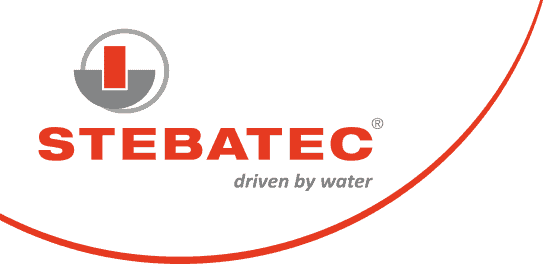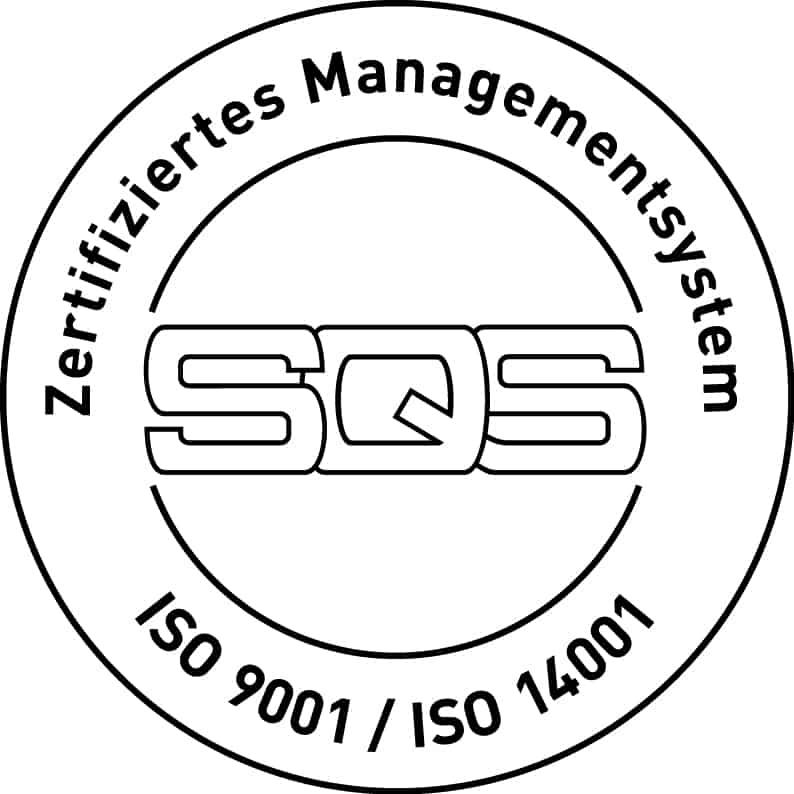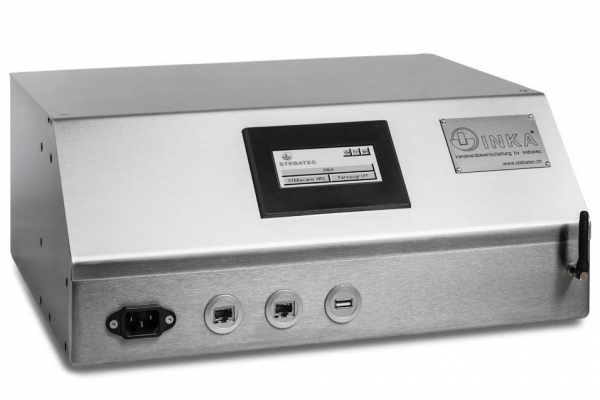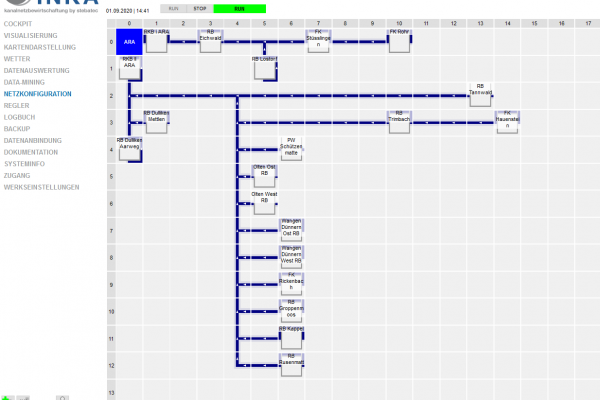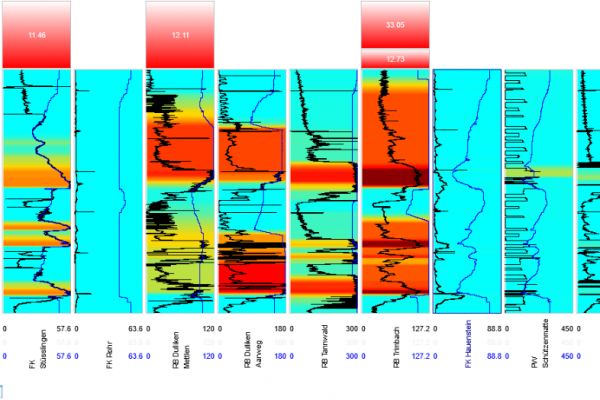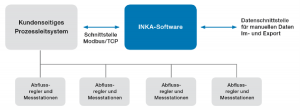Why INKA contributes to water protection
Wastewater treatment plants (WWTP) are designed to treat averagely large amounts of wastewater for economic reasons. In the dominant mixed system (wastewater and rainwater are collected together) the wastewater quantities exceed the capacities of the wastewater treatment plant in rainy weather. This leads to untreated or partially treated overflows into rivers and lakes. How critical the situation is is shown by surveys which estimate the proportion of untreated wastewater discharged at twenty percent. In some cases, high concentrations of problematic substances, such as pesticides, biocides or faecal bacteria, are discharged directly into watercourses. To prevent such occurrences, a great deal of money has already been invested in retention and stormwater tanks. These catch the rainwater and, after the rainfall event has subsided, channel it in a controlled manner to the sewage treatment plants. On the one hand, however, these basins are often only rudimentarily equipped with a control system and on the other hand, the entire sewage system is usually designed for rapid forwarding, so that the capacity of the basins located further up is not fully utilized. In addition, the fixed transfer quantities to the sewage treatment plant are not optimal, especially if the catchment areas are not irrigated equally. Simply building further retention basins is not only forbidden for financial reasons or because of the large amount of land required. Rather, the existing systems should first be better used.
What INKA does
The sewer network control software INKA ensures that the ARA is always efficiently utilized in the event of rainfall events and that excess wastewater quantities in the sewer network – including rain and retention basins as well as the sewer volumes – are retained in a controlled and optimized manner. The software processes thereby measured data from the sewer system, information about the conditions of the waters as well as precipitation data and prognoses and computes from it the optimal forwarding quantities at the places equipped with discharge regulators. The INKA controller pursues the following overriding goals:
- Minimum consumption of storage volumes in the sewer system, if the sewage treatment plant is not hydraulically utilized to 100%.
- Filling the storage volumes with as little polluted wastewater as possible.
- No discharge into the receiving waters as long as not all storage tanks are full.
- Controlled discharges into receiving waters under consideration of the water quality and load capacity of the respective receiving water.
- Energy-saving sewer network operation, if water cannot be processed in the sewage treatment plant during heavy rainfall anyway.
The use of the retention volume of the existing sewer network increases the capacity of the existing infrastructure and thus significantly reduces the overflows of untreated wastewater. In addition, optimal management of the existing infrastructure eliminates the need for high investments that would be required for additional construction measures.
Infrastructure configuration via Tool-Bar
The INKA user interface enables a modular replication of the existing sewer network and the associated components. Duct sections can be inserted and configured with some key data so that the INKA controller can orient itself on them. For example, the associated flow times must be assigned to two different discharge values so that the system can automatically calculate all other values linearly. In addition, the maximum flow capacity of the pipeline must be defined. Further modules such as retention volume, discharge controller, flow measurements and precipitation sensors can be individually created. The modeling interface also allows the animation of recorded measurement data, whereby rain events and the changing levels can be played back for analysis purposes.
